Sunny, 47 Degrees F
Light Variable Winds
Late autumn in Upper Louisiana brings cold temperatures and strong winds. November is a time of transition where the bounty of flora gives way to harvest of the region’s fauna.
Quebec-born explorer and missionary priest Jean Fraincois Buisson de St. Comte wrote concerning his travel along the Mississippi in the Illinois Country: “We left the village and travelled about eight leagues between the 29th of November and the 3rd of December. We were detained at the same place by the ice, which completely barred the river. During that time we had an abundance of provisions, no one need fast on that river, so great is the quantity of game of all kinds: swans, bustards*, or duck. The river is bordered by a belt of very fine timber, which is not very wide, so that one soon reaches beautiful prairies, containing number of deer.” Voyage of St. Cosme, 1698-1699, American Journeys Collection.
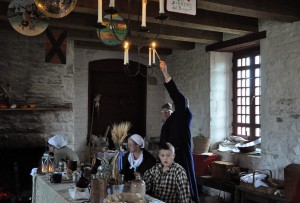 Our focus in the jardin shifts from harvesting to preparing the gathered foodstuffs for the winter season ahead. As the tasks of preserving the garden’s vegetables and fruits continue, we also anticipate the coming holiday season, which will feature both the produce and game the Illinois country provides. Through joyous celebrations, we take time to relish life and the Power who grants it, sharing feasts and revelries. As per our wont, our small group of habitants and local Milice, celebrate Martinmas and fall celebrations, and will be in residence in the Guard Room of Fort de Chartres, November 23rd through November 25th. We will be recreating the experiences of the colonists of the 18thcentury Illinois Country, including firing the stone bake oven and large hearth, providing meals and baked goods of the era, while the inhabitants engage in a number of out-door activities including some informal shooting contests.
Our focus in the jardin shifts from harvesting to preparing the gathered foodstuffs for the winter season ahead. As the tasks of preserving the garden’s vegetables and fruits continue, we also anticipate the coming holiday season, which will feature both the produce and game the Illinois country provides. Through joyous celebrations, we take time to relish life and the Power who grants it, sharing feasts and revelries. As per our wont, our small group of habitants and local Milice, celebrate Martinmas and fall celebrations, and will be in residence in the Guard Room of Fort de Chartres, November 23rd through November 25th. We will be recreating the experiences of the colonists of the 18thcentury Illinois Country, including firing the stone bake oven and large hearth, providing meals and baked goods of the era, while the inhabitants engage in a number of out-door activities including some informal shooting contests.
As we approach our sojourn, recipes of the season will be posted on the recettes page of this blog. Visitors are welcome to stop by and visit as we explore life in Upper Louisiana in the 18th century.
 In the garden yet this fall, work slows its pace to accommodate the approaching winter. The last of the cabbage, peas, radishes, and turnips suffer the November frosts, yet continue to provide and produce. The soil of the garden’s raised beds is awaiting it’s amendment with compost, leaves, and manure. As this work is completed and time weighs the winter hours, check this journal for a new post concerning this author’s ongoing captivation with our native persimmon and its culinary use in the region’s past. This elusive and recalcitrant fruit has such interesting narrative with both colonists and natives alike.
In the garden yet this fall, work slows its pace to accommodate the approaching winter. The last of the cabbage, peas, radishes, and turnips suffer the November frosts, yet continue to provide and produce. The soil of the garden’s raised beds is awaiting it’s amendment with compost, leaves, and manure. As this work is completed and time weighs the winter hours, check this journal for a new post concerning this author’s ongoing captivation with our native persimmon and its culinary use in the region’s past. This elusive and recalcitrant fruit has such interesting narrative with both colonists and natives alike.
In the meantime, to review the fall’s activities at the jardin or the Fort bake oven, follow the jardin’s facebook site for the most recent images. And of much interest, review author and archeologist Robert Mazrim’s new findings concerning the possibility of a jardin potager outside the walls of the newly discuvered1732 3rd wooden Fort de Chartres (1732)-exciting news, indeed.
A la prochaine!
* “According to their description, they are as large as a bustard, which is a kind of goose, having the neck longer and twice as large as those with us.” Voyages of Samuel De Champlain — Volume 02
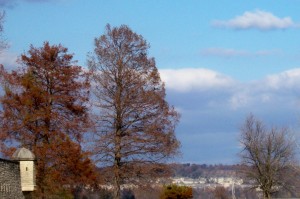
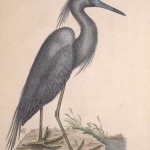
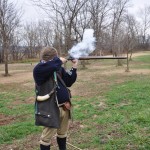
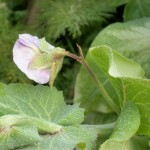
Leave a Reply